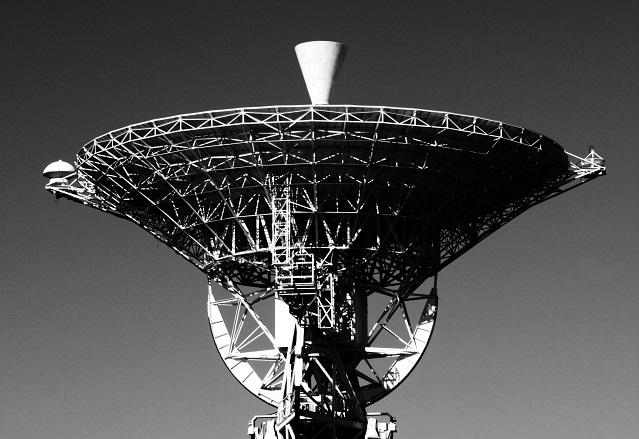Australia’s naval future and the role of space (Part 2)
Posted By Malcolm Davis on September 24, 2015 @ 06:00
My previous post [2] highlighted the growing challenge of advanced anti-ship missiles to naval surface combatants where I noted that the effectiveness of these counter-intervention systems depends on the adversary achieving early success in information warfare. Strengthening naval surface ship survivability demands continued access to space as an operational domain by preserving a space-enabled network centric warfare.
To achieve this, Australia should diversify the sensors and platforms of our network-centric infrastructure to complicate an adversary’s ability to swiftly degrade that infrastructure and hopefully dissuade them from attacking in the first place. Diversification emphasizes the ‘small, cheap and the many’ rather than the ‘large, expensive and few’.
The opportunity provided by low-cost COTs-based space capabilities and unmanned systems suggests a new direction for the ADF. Acquisition of an Australian independent low-cost small satellite capability that can fulfil critical defence mission requirements in an operationally responsive manner is an idea that should be considered for the 2020 Defence White Paper. These satellites could be supplemented with land-based high altitude long endurance (HALE) unmanned aerial vehicles (UAVs) where necessary, as well as ship-borne VTOL UAVs that can provide local ISR and communications support.
Why should Australia do this? There’s an inherent risk in being solely dependent on the US for the provision of large, sophisticated satellites in the face of growing adversary counter-space capabilities. By building a more diversified infrastructure based around larger numbers of small satellites, a potential adversary faces a much more complex challenge in undertaking counter-space operations. An independent space capability for Australia would give it a means to reconstitute after an attack and ensure greater national sovereignty over command and control.
Such a capability would also increase Australia’s ability to lead a regional coalition within our existing defence cooperation arrangements. It could see other key defence partners such as Japan, Indonesia and India potentially participate by buying their own small satellites, with common ‘plug and play’ compatibility that could then allow information sharing and strengthen regional defence partnerships. Finally, an independent Australian space capability would reinforce our alliance commitment to the United States by giving Australia an ability to ‘backfill’ in space, freeing up other US space assets for time-urgent tasks in different operational theatres.
How do we do it? When the topic of ‘space’ and ‘satellites’ is mentioned, there’s an automatic mindset that suggests development of independent space capabilities would be beyond Australia’s financial means. Australia’s ‘space policy’ [3] has been anything but bold for this very reason, with a tendency to be a passive consumer rather than an active provider of space capability.
However, new approaches to exploiting and accessing space are clearly emerging through private commercial actors like SpaceX [4], Virgin Galactic [5], Blue Origin [6], Bigelow Aerospace [7] and others that are promoting new lower cost, reusable space launch capabilities as part of innovative ‘newSpace’ industry development. In addition, the technology of satellites is changing with commercial companies such as Surrey Satellite Technology [8], able to produce and launch lower-cost ‘small satellites’ [9] for a few million dollars on commercial launch vehicles.
‘CubeSats’ are now available, which can employ commercial off the shelf (COTs) technology. The cost difference is profound [10]. A typical CubeSat built from COTs-based technology costs between $150,000 to $1 million [11], including launch, compared to $200 million to $1 billion for a large government developed satellite like the USAF Wideband Global Satcom (WGS) [12] system which currently provides ADF satellite communications.
Because those satellites are small, multiple CubeSats can be deployed on a single launch, spend a year or two in orbit, and then be replaced as needed. Each can undertake a specific task such as communications support, or gathering ISR at a particular wavelength with resolutions of around 500cm to 300cm and offer regular updates. Such small satellites can be networked when necessary to provide a virtual ‘space info-cloud’ for military C4ISR purposes, and a cloud is certainly hard for an ASAT to hit. A typical CubeSat may not provide the same level of capability as a single billion dollar WGS, but the small and the many may ultimately outweigh the large and the few if that large satellite has been disabled by an ASAT. It’s this ‘newSpace’ approach that offers the best path should Australia seek an independent space capability.
There’s a clear link between space and sea power. The key to preventing the new generation of anti-ship missile capabilities making naval surface combatants obsolete before they even hit the water is through preserving our naval network-centric warfare systems which, in turn, depends on functioning space systems. The debate over naval surface ship survivability, particularly in relation to the SEA 5000 Future Frigates acquisition, must take into account space security and resilience.
Whether the ADF remains vulnerable to adversary counter-space threats, which are set only to increase in coming years, remains to be seen. Debating prospects for mitigating these threats is a discussion that needs to occur sooner rather later.
Article printed from The Strategist: https://aspistrategist.ru
URL to article: /australias-naval-future-and-the-role-of-space-part-2/
URLs in this post:
[1] Image: https://aspistrategist.ru/wp-content/uploads/2015/09/5477247804_b41b176507_o.jpg
[2] post: https://aspistrategist.ru/australias-naval-future-and-the-role-of-space/
[3] ‘space policy’: http://www.industry.gov.au/industry/IndustrySectors/space/Publications/Pages/Australias-Satellite-Utilisation-Policy.aspx
[4] SpaceX: http://www.spacex.com/
[5] Virgin Galactic: http://www.virgingalactic.com/satellite-launch/
[6] Blue Origin: https://www.blueorigin.com/
[7] Bigelow Aerospace: http://bigelowaerospace.com/
[8] Surrey Satellite Technology: http://www.sstl.co.uk/
[9] small satellites’: http://www.thespacereview.com/article/2577/1
[10] profound: http://www.economist.com/node/21603240/print
[11] $150,000 to $1 million: http://www.economist.com/news/technology-quarterly/21603240-small-satellites-taking-advantage-smartphones-and-other-consumer-technologies
[12] Wideband Global Satcom (WGS): http://www.defence.gov.au/AnnualReports/07-08/vol2/ch3_02_wgs.htm
Click here to print.
